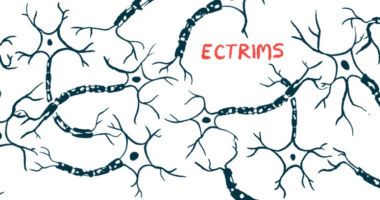Benefits of Aerobic Exercise in MS Modulated by Specific Brain Region
Aerobic training found to improve walking capacity among people with MS

Aerobic training for up to three months significantly outperformed less-strenuous exercise at improving walking capacity among people with multiple sclerosis (MS), a new study reports.
However, the benefits of aerobic exercise seem to be greater among patients without MS-related damage in the insula — a brain region involved in cardiac regulation.
These findings suggest that aerobic exercise “is an effective tool to improve cardiovascular function and walking capacity and to exert neuroprotective effects in MS patients,” the researchers wrote, although “such beneficial effect may be modulated by insula integrity.”
The study, “The insula modulates the effects of aerobic training on cardiovascular function and ambulation in multiple sclerosis,” was published in the Journal of Neurology.
Study assessed how insular lesions affect cardiovascular function after exercise
MS is a neurodegenerative disorder in which inflammation causes progressive damage to nerve cells, which leads to a wide range of symptoms. Some of these symptoms are caused by damage to the autonomic nervous system, which controls involuntary processes such as thermoregulation and cardiovascular functions.
Several studies showed that exercise, particularly aerobic exercise that increases the heart rate, can be beneficial for several MS symptoms, such as fatigue and depression, and might even have neuroprotective effects.
However, MS damage to the insula might cause an abnormal regulation of cardiovascular functions and limit the benefits of aerobic exercise in MS. To address this, a team of researchers in Italy examined how insular lesions and volume impacted cardiovascular function in people undergoing aerobic exercise or nonstrenuous training.
The study included 61 MS patients — including 20 with relapsing-remitting MS and 41 with a progressive form of the disease — with a mean age of 49.7 years. They were randomly assigned to either aerobic training, involving moderate exercises designed to keep the patient’s heart rate between 55% and 75% of their maximum heart rate, or nonspecific motor training, involving activities that did not increase heart rate, such as lower limb stretching and balance exercises.
For both groups, the intervention lasted two to three months and consisted of 24 sessions done two or three times per week. Each session lasted 30–40 minutes, with constant heart rate monitoring.
The researchers also included data from people without neurologic conditions or systemic disorders that might affect the central nervous system. These individuals were used as the control groups for cardiopulmonary data and MRI assessments before the start of the interventions, or baseline.
Before and after the intervention period, all participants underwent cardiovascular and physical tests, as well as MRI scans. These included oxygen and heart rate measures, assessments of walking ability such as the six-minute walk test (6MWT) and timed 25-foot walk, and MRI measurements of brain and insula volume and insula lesions.
[Aerobic exercise] is an effective tool to improve cardiovascular function and walking capacity and to exert neuroprotective effects in MS patients
Before the intervention, MS patients had significantly worse results in all the assessments compared with the control group, whereas the two MS groups had similar results in all assessments. However, MS patients with a higher lesion volume in the left insula had a significantly higher heart rate reserve, indicating worse cardiopulmonary function during peak physical effort. Patients with insular lesions also had lower brain volumes, indicating more atrophy, and more disability than those without such lesions.
After the intervention, patients assigned to the aerobic exercises had greater walking function improvements, as assessed with the 6MWT, than those in the control exercise group. However, this improvement was only observed in the group of patients without insular lesions. Oxygen uptake and heart rate measures were also improved in the aerobic training group, but these improvements were not statistically significant.
Patients with insular legions had slower rate of brain atrophy after training
In MRI scans, aerobic exercise had no impact on brain atrophy rates in the overall MS group nor in the group with insular lesions. However, patients without insular lesions experienced a slower rate of brain atrophy after undergoing aerobic training, compared with the control exercise group.
“These longitudinal MRI results endorse the possible neuroprotective role of [aerobic training] with a reduced atrophy progression rate in MS patients who performed this type of training,” the researchers wrote.
In conclusion, compared with less-strenuous exercise, aerobic training showed a significant benefit for walking ability in MS patients, and it also tended to improve other measures of cardiopulmonary function. However, a healthy insula seems to be needed to optimize the response to aerobic exercise.
The researchers noted some limitations, including “the inclusion of MS patients with heterogeneous disease course and severity and the small sample size.”







